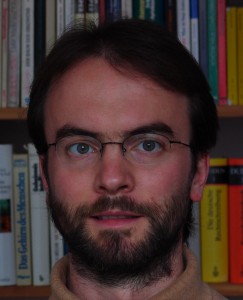 Jörn Anemüller studied Physics at the University of Oldenburg, Germany, and Information Processing and Neural Networks at King’s College, University of London, where he received the M.Sc. in 1996. He earned the Ph.D. in Physics at the University of Oldenburg in 2001with a dissertation on “Across frequency-processing in convolutive blind source separation”. From 2001 to 2004 he conducted work on biomedical signal analysis as a post-doctoral fellow at the Salk Institute for Biological Studies and at the University of California, San Diego. Since 2004 he is member of the scientific staff at the Dept. of Physics, University of Oldenburg, currently leading the statistical signal models research group. His interests include statistical signal processing and machine learning techniques with application to acoustic, speech and biomedical signals. His talk takes place on Thursday, March 26 at 1pm, in room D0206.
Jörn Anemüller studied Physics at the University of Oldenburg, Germany, and Information Processing and Neural Networks at King’s College, University of London, where he received the M.Sc. in 1996. He earned the Ph.D. in Physics at the University of Oldenburg in 2001with a dissertation on “Across frequency-processing in convolutive blind source separation”. From 2001 to 2004 he conducted work on biomedical signal analysis as a post-doctoral fellow at the Salk Institute for Biological Studies and at the University of California, San Diego. Since 2004 he is member of the scientific staff at the Dept. of Physics, University of Oldenburg, currently leading the statistical signal models research group. His interests include statistical signal processing and machine learning techniques with application to acoustic, speech and biomedical signals. His talk takes place on Thursday, March 26 at 1pm, in room D0206.
Machine learning approaches for estimation of a neuron’s spectro-temporal filter from non-Gaussian stimulus ensebmles
Abstract: Engineers may view an auditory neuron as an unknown but (hopefully) identifiable system that transforms the acoustic stimulus input into a binary “spike” or “no-spike” output. The linear part of the neuron’s spectro-temporal transfer function is commonly refered to as the spectro-temporal receptive field (STRF). From a machine learning perspective, this setting corresponds to the binary classification problem of discriminating spike-eliciting from non-spike-eliciting stimulus examples. The classification-based receptive field (CbRF) estimation method that we proposed recently adapts a linear large-margin classifier to optimally predict experimental stimulus-response data and subsequently interprets learned classifier weights as the neuron’s receptive field filter.
Efficacy of the CbRF method is validated with simulations and for auditory spectro-temporal receptive field estimation from experimental recordings in the auditory midbrain of Mongolian gerbils. Acoustic stimulation is performed with frequency- modulated tone complexes that mimic properties of natural stimuli, specifically non-Gaussian amplitude distribution and higher-order correlations. Results demonstrate that the proposed approach successfully identifies correct underlying STRFs, even in cases where standard second-order methods based on the spike-triggered average (STA) do not.
Applied to small data samples, the method is shown to converge on smaller amounts of experimental recordings and with lower estimation variance than the generalized linear model and recent information theoretic methods. Analysis of temporal variability of receptive fields quantifies differences between processing at different stages along the auditory pathway.
Implications for speech recognition and acoustic event detection are briefly discussed.